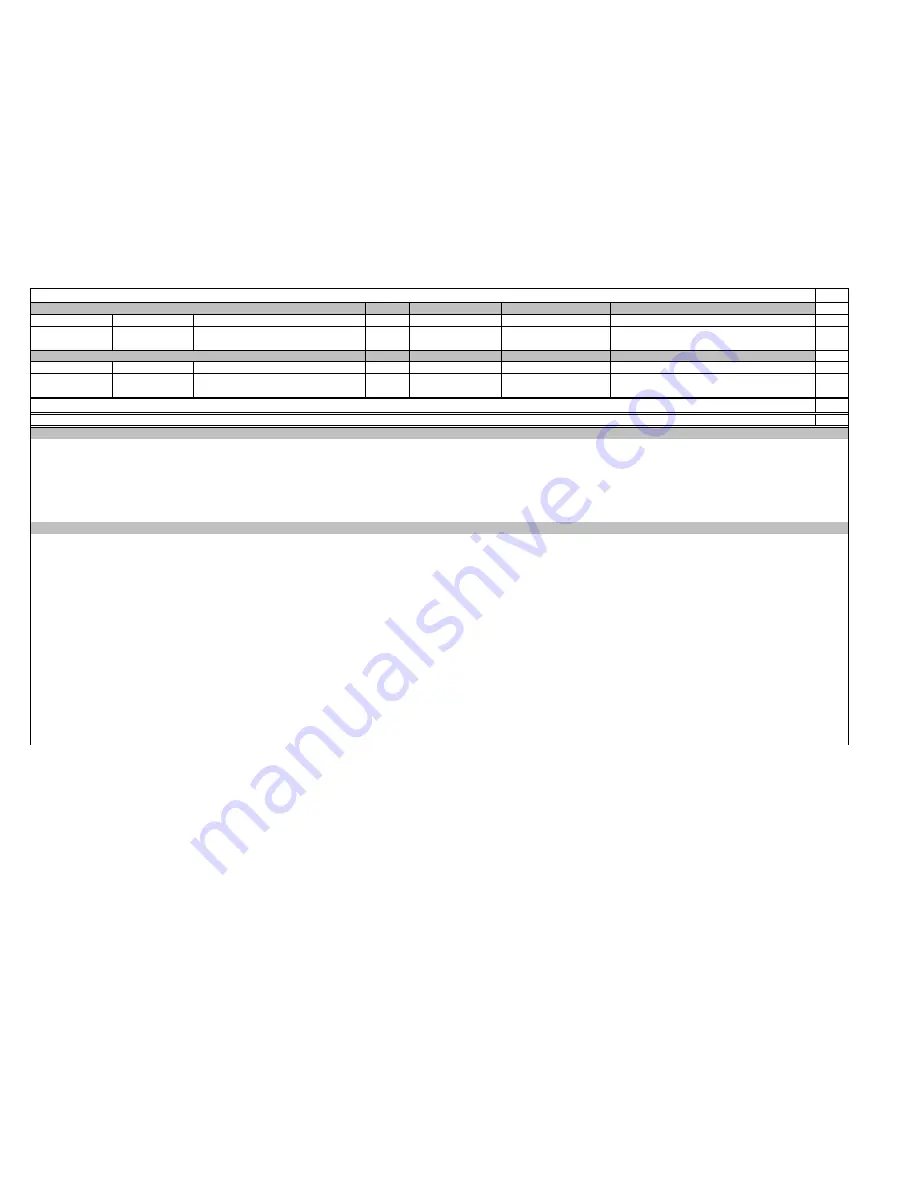
A
IQ 250/260 Meter
Appendix B:
Modbus Mapping
C34C - C3CD
49997 - 50126
Reserved
Set to 0.
130
Block Size:
130
C737 - C7B6
51000 - 51127
Reserved
Set to 0.
128
Block Size:
128
Notes
1
2
3
4
5
6
7
8
9
10
11
Entities to be monitored against limits are identified by Modbus address. Entities occupying multiple Modbus registers, such as floating point values, are identified by the lower register address. If any of the 8 limits is unused,
set its identifier to zero. If the indicated Modbus register is not used or is a nonsensical entity for limits, it will behave as an unused limit.
Each identifier is a Modbus register. For entities that occupy multiple registers (FLOAT, SINT32, etc.) all registers making up the entity must be listed, in ascending order. For example, to log phase A volts, VAs, voltage THD,
and VA hours, the register list would be 0x3E7, 0x3E8, 0x411, 0x412, 0x176F, 0x61D, 0x61E and the number of registers (0x7917 high byte) would be 7.
Writing this register causes data to be saved permanently in nonvolatile memory. Reply to the command indicates that it was accepted but not whether or not the save was successful. This can only be determined after the
meter has restarted.
Reset commands make no sense if the meter state is LIMP. An illegal function exception will be returned.
Energy registers should be reset after a format change.
Register valid only in programmable settings update mode. In other modes these registers read as 0 and return an illegal data address exception if a write is attempted.
Meter command registers always read as 0. They may be written only when the meter is in a suitable mode. The registers return an illegal data address exception if a write is attempted in an incorrect mode.
If the password is incorrect, a valid response is returned but the command is not executed. Use 5555 for the password if passwords are disabled in the programmable settings.
M denotes a 1,000,000 multiplier.
All registers not explicitly listed in the table read as 0. Writes to these registers will be accepted but won't actually change the register (since it doesn't exist).
Meter Data Section items read as 0 until first readings are available or if the meter is not in operating mode. Writes to these registers will be accepted but won't actually change the register.
FLOAT
32-bit IEEE floating point number spanning 2 registers. The lower-addressed register is the high order half (i.e., contains the exponent).
TSTAMP
3 adjacent registers, 2 bytes each. First (lowest-addressed) register high byte is year (0-99), low byte is month (1-12). Middle register high byte is day(1-31), low byte is hour (0-23 plus DST bit). DST
SINT16 / UINT16
16-bit signed / unsigned integer.
SINT32 / UINT32
32-bit signed / unsigned integer spanning 2 registers. The lower-addressed register is the high order half.
Data Formats
ASCII
ASCII characters packed 2 per register in high, low order and without any termination characters. For example, "IQ250" would be 3 registers containing 0x4951, 0x2002, 0x0500.
Reserved Section
Reserved Block
Reserved Block
End of Map
www.eaton.com
IB02601006E MM-26
Summary of Contents for IQ 250
Page 2: ......
Page 22: ...3 6 IB02601006E www eaton com Chapter 3 Mechanical Installation IQ 250 260 Meter...
Page 38: ...4 16 IB2601006E www eaton com Chapter 4 Electrical Installation IQ 250 260 Meter...
Page 104: ...A 6 IB02601006E www eaton com Appendix A IQ 250 260 Navigation Maps IQ 250 260 Meter...
Page 134: ...A IQ 250 260 Meter Appendix B Modbus Mapping www eaton com IB02601006E MM 28...











































